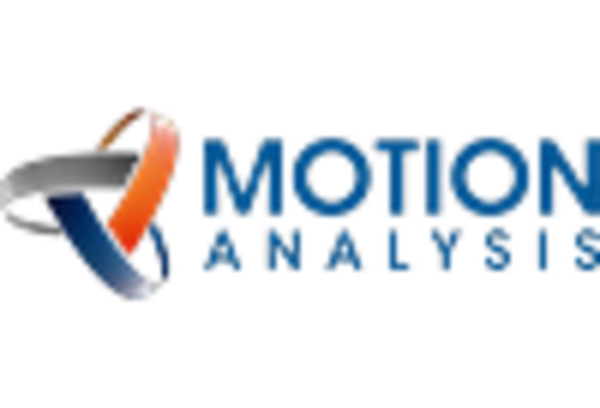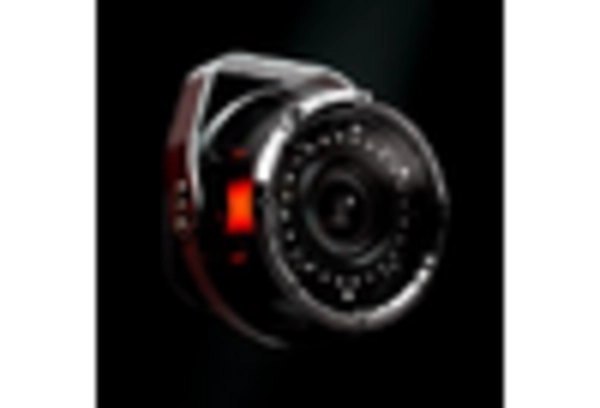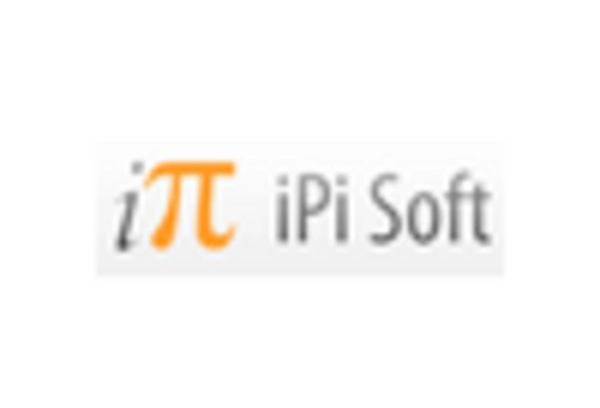Growing Interest in Sports Analytics
The Markerless Motion Capture Market is benefiting from the rising interest in sports analytics, as teams and coaches increasingly rely on data-driven insights to enhance performance. Markerless motion capture technology enables the detailed analysis of athletes' movements, providing valuable information on biomechanics and technique. This data can be instrumental in injury prevention and performance optimization. Recent reports suggest that the sports analytics market is expanding rapidly, with a projected growth rate that could exceed 25% in the next few years. As sports organizations invest in advanced technologies to gain a competitive edge, the demand for markerless motion capture solutions is likely to increase, further solidifying its position within the sports industry.
Expansion into Healthcare Applications
The Markerless Motion Capture Market is increasingly finding applications in the healthcare sector, particularly in rehabilitation and physical therapy. The ability to monitor patient movements without the need for cumbersome equipment allows for more natural and effective therapy sessions. Healthcare professionals are utilizing markerless motion capture to assess patient progress and tailor rehabilitation programs accordingly. Recent studies indicate that the market for motion capture in healthcare could grow significantly, with estimates suggesting a potential increase of over 15% annually. This expansion is indicative of a broader trend where technology is being leveraged to improve patient outcomes and streamline clinical workflows. As healthcare providers seek innovative solutions to enhance patient care, the markerless motion capture market is poised to play a pivotal role.
Increased Demand in Entertainment and Gaming
The Markerless Motion Capture Market is witnessing a surge in demand driven by the entertainment and gaming sectors. As the industry evolves, there is a growing need for realistic animations and immersive experiences, which markerless motion capture technology can provide. This technology allows for the seamless integration of live-action performances into animated environments, enhancing storytelling and audience engagement. Recent market analyses suggest that the entertainment sector accounts for a significant portion of the overall market share, with projections indicating that it could reach several billion dollars by the end of the decade. The ability to capture nuanced movements without the constraints of traditional markers is appealing to game developers and filmmakers alike, thereby propelling the growth of the markerless motion capture market.
Integration with Virtual and Augmented Reality
The Markerless Motion Capture Market is increasingly intersecting with the fields of virtual and augmented reality, creating new opportunities for immersive experiences. As these technologies gain traction in various sectors, including education, training, and entertainment, the demand for markerless motion capture systems is expected to rise. The ability to capture and translate real-world movements into virtual environments enhances user engagement and interactivity. Market forecasts indicate that the virtual and augmented reality sectors are set to grow exponentially, with estimates suggesting a combined market value that could reach hundreds of billions of dollars in the coming years. This integration not only broadens the application scope of markerless motion capture but also positions it as a critical component in the development of next-generation immersive technologies.
Technological Advancements in Markerless Motion Capture
The Markerless Motion Capture Market is experiencing rapid technological advancements that enhance the accuracy and efficiency of motion capture systems. Innovations in computer vision, artificial intelligence, and machine learning are driving the development of sophisticated algorithms that can analyze human movement with remarkable precision. For instance, the integration of real-time data processing capabilities allows for immediate feedback, which is crucial in applications such as gaming and virtual reality. According to recent estimates, the market is projected to grow at a compound annual growth rate of over 20% in the coming years, indicating a robust demand for advanced motion capture solutions. These technological improvements not only streamline the production process but also expand the potential applications of markerless motion capture across various sectors, including entertainment, sports, and healthcare.

















Leave a Comment